"Unique Forms of Continuity in Space" is a famous 1913 bronze sculpture by Italian futurist Umberto Boccioni, part of the influential but short-lived futurist movement.
Emerging in early 20th-century Italy, futurism emphasized modernity, change, and the future, seeking to destroy old artistic and social traditions by focusing on technology, speed, youth, and violence. The movement glorified war and fascism, viewing World War I as a means to cleanse society of its old ways, though both Boccioni and the movement ultimately perished in the war.
Futurism expressed its ideas through new artistic methods, rebelling against traditional styles and art criticism. It employed various mediums including painting, sculpture, architecture, theater, film, and fashion, aiming to influence all aspects of society. Boccioni’s work spanned painting, literature, and sculpture.
In "Unique Forms of Continuity in Space," Boccioni conveyed the futurist philosophy of constant change, movement, speed, and forward momentum. Despite its abstract elements, the themes of movement and speed are evident in the body's positioning and the leg symbols representing flames, wind, or wings. The shiny bronze evokes modernity and futuristic technology, making some liken it to a superman. The sculpture changes as viewers move around it, embodying the theme of constant change in relation to movement and time.
Understanding a sculpture requires knowledge of previous works and the movement it responds to. Boccioni and the futurists adopted techniques from cubism, depicting objects from multiple angles and using abstract methods to show movement and time. Influenced by the Impressionists, Boccioni's early paintings and the bright colors in his later abstract works show this influence.
The piece was influenced by Rodin’s "The Walking Man," which depicts a more traditional walking man but without a head and arms. Rodin’s work marked a departure from formal tradition, such as Michellangelo’s sculpture, and Boccioni’s sculpture extended this even further.
Umberto Boccioni died in 1916, at the age of 33, during World War I, after falling from his horse during a training exercise. His untimely death marked a significant loss for the Futurist movement which soon after died out.





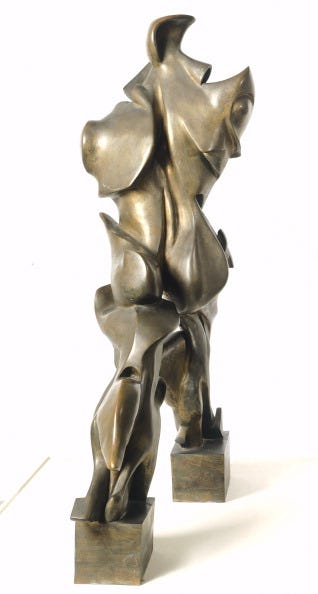
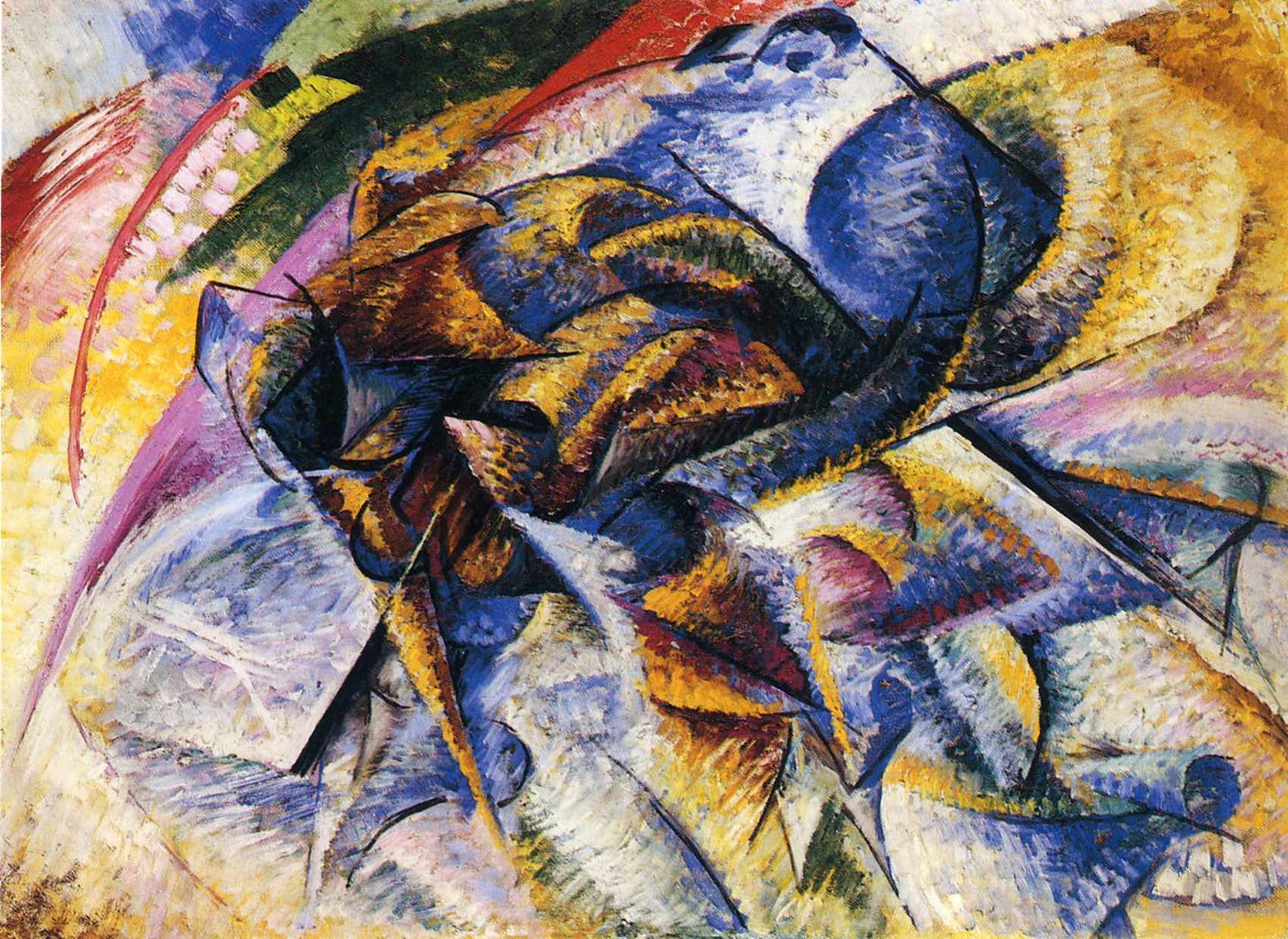
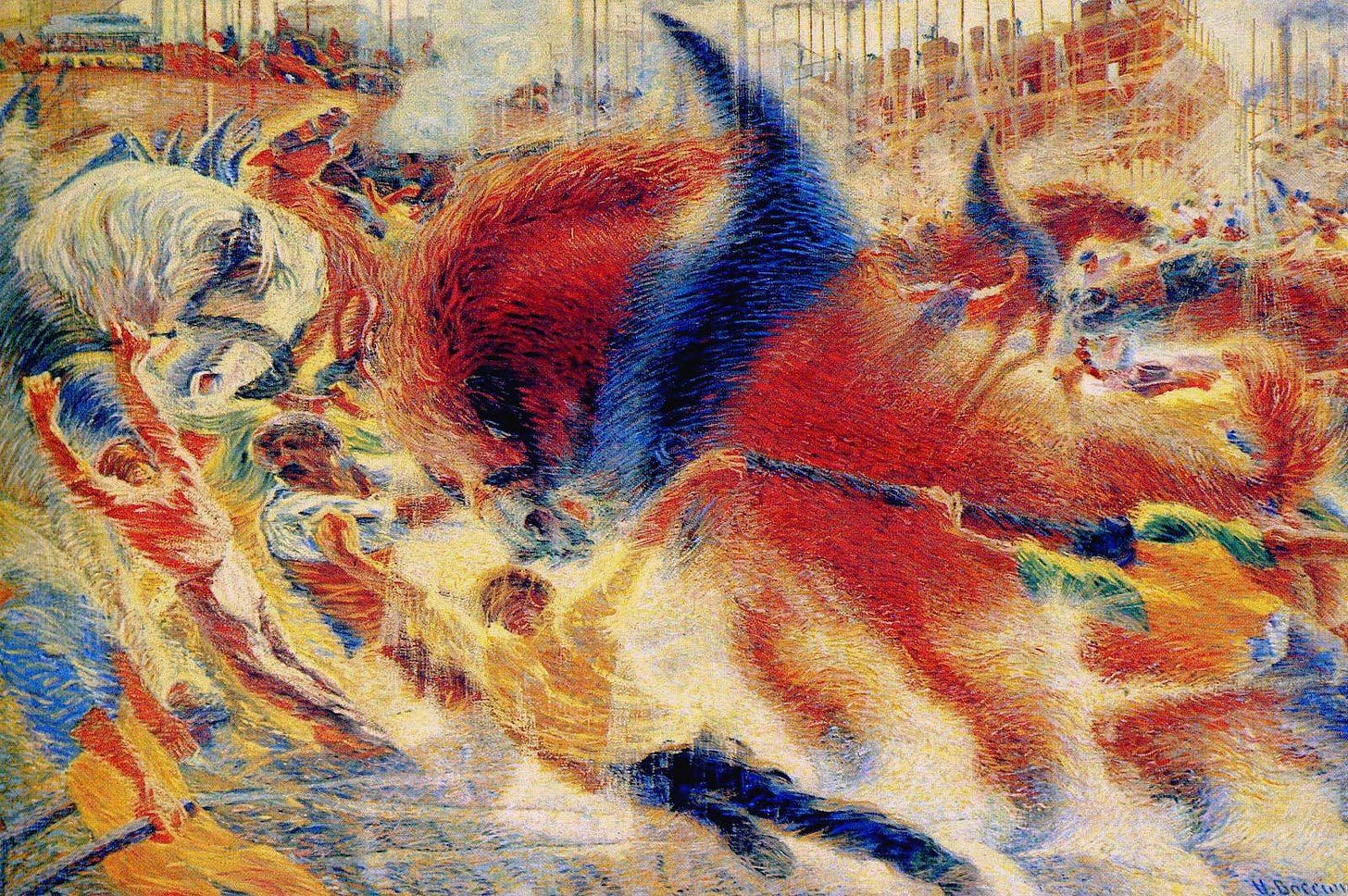
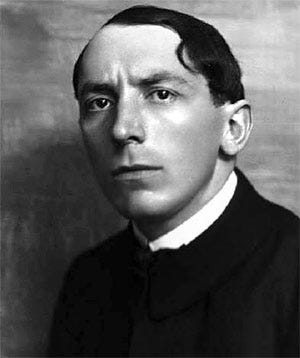
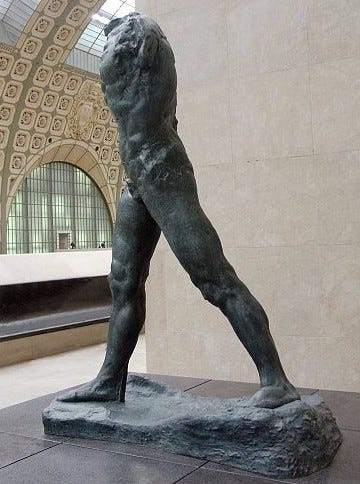
Boccioni is fabulous. Whatever the politics of the Futurists were they produced some wonderful art. I miss them whenever I visit a museum. What an age of hope.